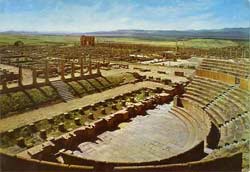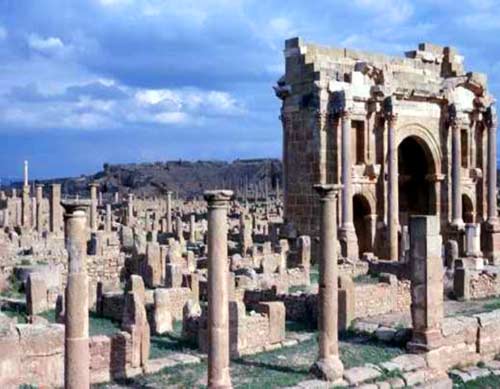Timgad is the modern name of the city Thaugadi, established by Roman Emperor Trajan in 100 AD for military defense purposes in the northern Aures Mountains.
 |
|
The Theater in Timgad |
After the invasion by the Vandals in the 5th century, the city was destroyed by the local Aures people, but it was revived in the 6th century under Byzantine occupation before being abandoned for about 100 years.
Since 1880, archaeological excavations have uncovered the remains of a city built according to the strict principles of Roman urban planning at its peak, featuring remarkable public buildings such as: a forum, a Capitol building, a theater, baths, temples, a marketplace, and a public library. The remnants of churches indicate that Christianity was introduced to Timgad in the 3rd century.
The preservation and promotion of this archaeological site pose several challenges: It is essential to accurately define the boundaries of the site, considering the areas that have not been fully excavated. To protect the beautiful mosaics in some houses from temperature fluctuations, it was decided to relocate the most important pieces to the museum of the archaeological site. The local authorities have organized an annual music and theater festival in Timgad, but performances that could damage the ancient theater have been suspended. Timgad was inscribed on the UNESCO World Heritage List in 1982.


















































